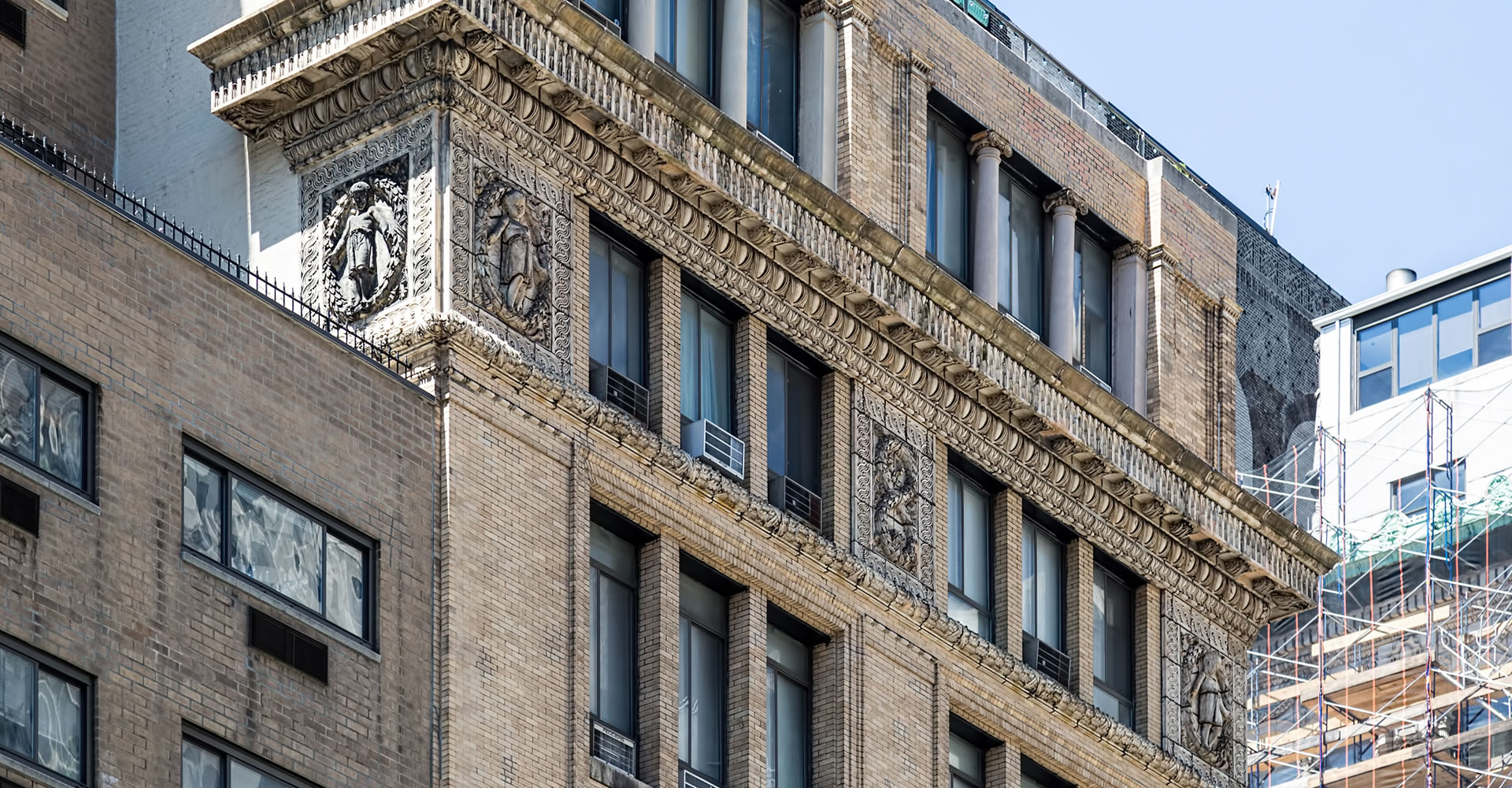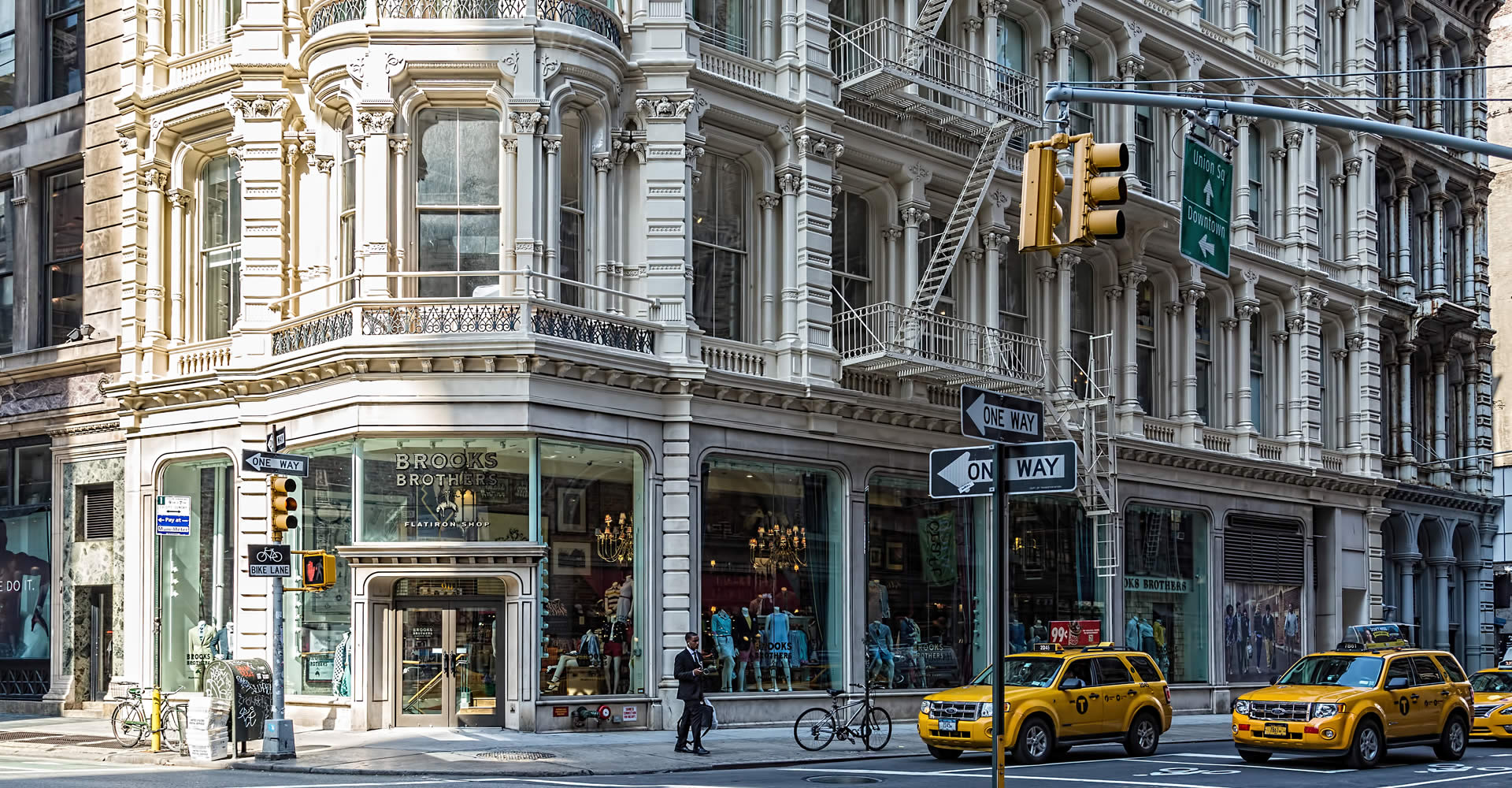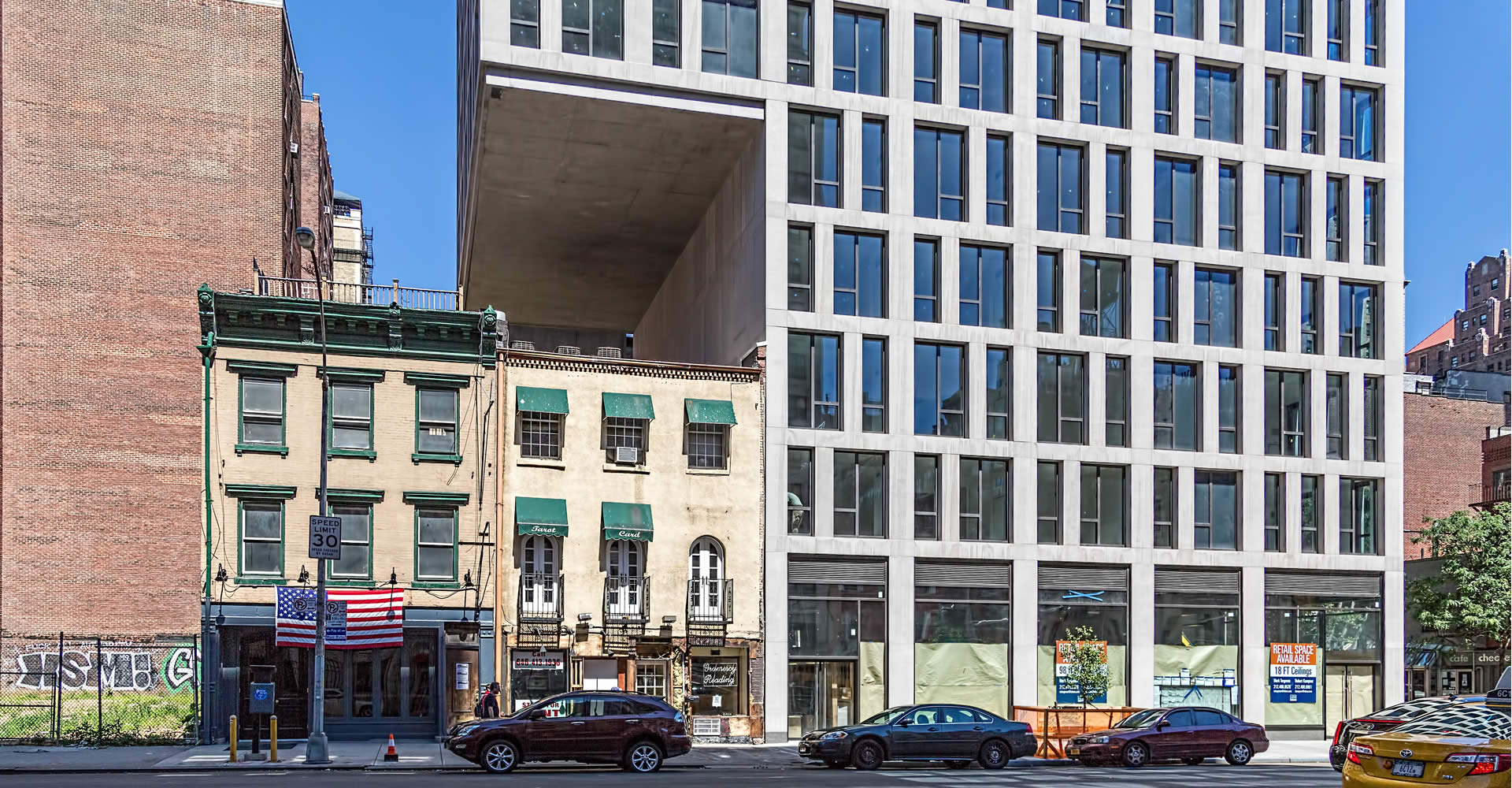New York City has nearly a million buildings, erected over a span of four centuries in a bewildering (and fascinating) palette of styles. Yet most New Yorkers and visitors are oblivious to the city’s architectural riches. That’s not a criticism – just the observation that New York is so fast-paced, people rarely have a spare moment to appreciate the art and science of our built environment.
Here’s another observation: New York City has hundreds of museums of every description. But the Big Apple could be considered a museum itself: A 301-square-mile museum of architecture, where the exhibits change daily and reflect 400 years of development. Our homes, buildings, bridges, tunnels, subways and parks are fascinating works, accessible to all. Take the time to look around – and up and down – and you’ll discover a mosaic of history, art, and science in every borough.
If you are a New Yorker, you probably live or work just a short walk from some architectural treasure – possibly just minutes from an historic district filled with landmarks. If you’re a visitor, then your hotel is probably close to a landmark, or may itself be historic. To enjoy this wealth, all you need are your feet and your eyes. Camera is optional but recommended. As noted above, the exhibits change daily – your favorite building or park could be changed or demolished tomorrow, so capture it today. You can collect buildings, the way bird-watchers collect species.
This site is the start of what I hope will be a layman’s guide to and sampler of New York architecture: The photo galleries and related articles are meant to entice. As a layman’s guide, NewYorkitecture.com is not heavy on architectural jargon, but the site will be developing a modest beginner’s course on architectural appreciation. You won’t exactly learn architecture, but you’ll learn the differences between a column and a pilaster, and how to distinguish Gothic from Romanesque. At this writing, of course, the site is limited. I’ll be adding to it every week, so it will probably be worth your while to come back every week.
The navigation at the top of the screen is the most obvious way to get around – categorized to make it easier to follow. The home screen photos are linked to the ten most recent image galleries – just click to visit. You can also use the previous/next links in each gallery to explore another subject.
I include parks in this site because they are all designed – what I call “Parkitecture” – not just undeveloped land.
Enjoy the photo galleries! When you open a gallery, the slide show starts automatically. Click the icon next to “full screen” for a more dramatic view; click Play button in the bottom left corner to resume the slideshow. If you prefer, you can also use your keyboard left-arrow and right-arrow keys to go back and forth. When you’re in full-screen mode, the up and down arrows control the caption and carousel ribbon at the bottom of the screen. Press the [Esc] key to exit full-screen mode.
So jump in, explore, have fun. Then put on your most comfortable walking shoes and meet New York’s fabulous architecture in person!
If you are an out-of-town visitor to New York City, welcome! Take a look at the Guides section for helpful info.
If you find that the architecture bug has bitten you – beware, there is no antidote – you will need a better guide. The best guide, IMHO, is “ AIA Guide To New York City ” by Norval White and Elliot Willensky with Fran Leadon. (Oxford University Press, New York.) The 1,055-page fifth edition includes 955 pages of maps, photos and detailed block-by-block, building-by-building commentary on virtually every architecturally significant structure within the five boroughs. The book even notes significant demolitions! There are subject and address indexes, a glossary of architectural terms, even touring and photography tips. You can use the book as a walking tour guide, as a reference book, or as a history book of sorts (read about real estate development battles, zoning law trades, etc.). The authors’ scholarship is matched by their wit, so you’ll be entertained as well as educated. The “AIA” in the title, by the way, stands for American Institute of Architects.
Suggested Reading: NewYorkitecture.com is intended as a recreational site – exploring New York City’s architecture just for the fun of it. If you want to dig deeper, here’s a page of excellent research sites: Web Resources. If you’d rather learn from books you can hold, here’s a short list of excellent references: Favorite Books.
About NewYorkitecture.com

When I found myself with time on my hands, I resumed an old interest – photography. That led to going around town snapping pictures of places I knew as a kid (we moved around a lot), and that rekindled a fascination with architecture. Architecture fills one of our most basic needs – shelter – with beauty, utility and economy. Every building is a unique expression of that art and science, and many are wonders to behold. Within a month I realized that I just had to share my finds with others.
But, truth be told, I’m not an expert on architecture: I’m a gourmand, not a gourmet in this respect.
Tech notes: I’ve used six cameras in preparation of this site: Canon G5, Canon SX110 IS, OlympusSZ-10, Canon SX40, Canon Rebel T3i, and Canon 5D mark iii. The Canon 5D optics, speed and tech features leave the others in the dust – but is incredibly heavy. I’m now lugging 20 pounds of gear. But I miss the SX40, for its extreme zoom range of 24mm-840mm (35mm equivalent). That let me shoot whole facades from close in, or zoom in on a 20th-story gargoyle without carrying and changing lenses. Many galleries include High Dynamic Range (HDR) images – photos that merge three exposures to gain greater highlight and shadow detail. In these images, you may see ghost images of people and vehicles that moved between exposures. This is intentional. I also use Adobe’s Lightroom instead of HDR to improve the photos. In addition to saving more shadow and highlight detail, Lightroom lets me correct perspective (keeps verticals vertical).
Privacy Policy
NewYorkitecture.com does not collect any personal information. Links in NewYorkitecture.com may identify this site as the traffic source, but will not identify you as an individual. (Of course if you jump to a site where you have an account – say Amazon.com – that site will probably recognize you as a returning visitor.)
NewYorkitecture.com participates in the Amazon Services LLC Associates Program, an affiliate advertising program designed to provide a means for sites to earn advertising fees by advertising and linking to amazon.com.
Terms & Conditions
NewYorkitecture.com exercises reasonable care in linking to other sites, but cannot be responsible for the content of other sites.
Except where noted otherwise, all photography and writing is my own. You are welcome to enjoy and quote text from NewYorkitecture.com; credit would be appreciated.
I’ve invested a great deal of time and energy in creating these photos. I’m quite happy to share my discoveries with you in this site – and without ads! But I do ask that you respect my copyright and not re-use my photos without permission. Thank you!
You may order photos – digital or prints – on the Buy Photos page.


























